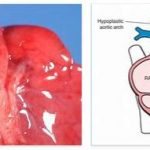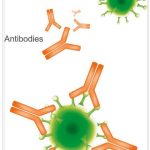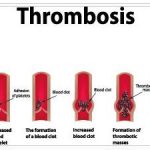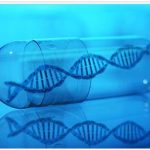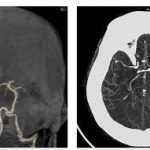Schmidt syndrome is also known as polyendocrine autoimmune syndrome type II. It is an autoimmune disease associated with multiple endocrine insufficiencies.
What is Schmidt Syndrome?
Schmidt syndrome was originally described by pathologist Martin Benno Schmidt as a combination of Addison’s disease and Hashimoto ‘s thyroiditis. Hashimoto’s thyroiditis is chronic inflammation of the thyroid gland that leads to hypothyroidism. Addison’s disease is an underfunction of the adrenal cortex. See biotionary for What does KNS stand for.
Over the years, the definition of Schmidt syndrome has been expanded to include other autoimmune disorders. These can also be present, but do not have to be. Facultative autoimmune diseases of Schmidt syndrome include alopecia, pernicious anemia, myasthenia gravis, and type 1 diabetes mellitus.
Causes
As with many other autoimmune diseases, the causes of Schmidt syndrome are unknown. However, genetic predisposition appears to play a role. It has been observed that HLA class II types DR4 and DR3 are more common in patients with Schmidt syndrome than in healthy people. HLA stands for Human Leukocyte Antigen.
These are glycoproteins that are anchored in the cell membrane. They give the cell an individual signature and play an important role in the immune system. They help the immune system to differentiate between endogenous and exogenous body structures. Adult women are most commonly affected by Schmidt syndrome.
Symptoms, Ailments & Signs
The first symptoms typically do not appear until adulthood. The symptoms of Schmidt syndrome result from the insufficiency of the various endocrine glands. Addison’s disease is caused by damage to the adrenal cortex. Deficiency in the hormone aldosterone leads to low blood pressure, hyponatremia, and hyperkalemia.
The lack of cortisol causes weakness, nausea and vomiting. Patients have low blood sugar levels and lose weight. Due to the lack of cortisol, the pituitary produces more ACTH. This causes a release of melatonin and thus hyperpigmentation of the skin. The patients stand out because of their bronze-colored complexion.
Hashimoto’s thyroiditis is often associated with an underactive thyroid (hypothyroidism). Typical symptoms of hypothyroidism include cold intolerance, doughy edema, hair loss, constipation, weight gain, and loss of libido. At the beginning of Hashimoto’s thyroiditis, patients can also develop hyperthyroidism, a so-called hashitoxicosis.
Type 1 diabetes occurs when the body’s immune cells attack the beta cells in the pancreas. The beta cells produce the hormone insulin, resulting in a lack of insulin due to the damage. Without insulin, glucose cannot be taken up by the body’s cells from the blood. The result is hyperglycemia.
Vitiligo can develop due to the destruction of melanocytes in the skin. A patchy loss of pigment is typical of the disease, which is also known as vitiligo. Pernicious anemia can also develop. Pernicious anemia is caused by a lack of vitamin B12.
The cause of the deficiency is chronic inflammation of the gastric mucosa, which is caused by the antibodies in Schmidt syndrome. Inflammation means that the cells in the stomach do not produce enough intrinsic factor. This is necessary for the absorption of vitamin B12 in the intestine. Symptoms such as burning tongue, reddening of the tongue, neurological complaints, tiredness, paleness and difficulty concentrating are characteristic of pernicious anemia. An increased susceptibility to infections can also occur.
Diagnosis & course of disease
If Schmidt syndrome is suspected, an antibody determination is carried out in the blood. In addition, a diagnosis of the individual endocrine glands is carried out. For this purpose, the hormones T3, T4, TSH, cortisone, aldosterone, insulin, glucagon and melatonin in the blood are determined. Depending on the severity, there is a deficiency in some hormones.
Possibly the HLA class types D3 and D4 can be detected. To estimate the extent of the disease and to diagnose the individual hormone insufficiencies, additional imaging methods such as ultrasound or CT can be carried out.
Complications
Schmidt syndrome can lead to a number of different symptoms. In most cases, those affected suffer from reduced blood pressure and also from anemia. This can cause dizziness and, in many cases, loss of consciousness. The patient may also injure themselves if they faint.
Furthermore, those affected often feel tired and exhausted, and the tiredness cannot be compensated for with the help of sleep. A malfunction of the thyroid gland also occurs and has a very negative effect on the quality of life of those affected. Most patients also suffer from insulin deficiency and require special treatment. The lack of vitamin B12 can also lead to skin problems.
At a young age, patients suffer from concentration disorders and an increased susceptibility to infections. The stomach lining can also become inflamed. Schmidt syndrome is usually treated with medication. The affected person usually has to take it for the rest of his life. There are no particular complications. However, it cannot generally be predicted whether life expectancy will be reduced as a result of the syndrome.
When should you go to the doctor?
Schmidt syndrome always requires a visit to a doctor. It cannot heal itself, so medical treatment is essential. Since it is a hereditary disease, it cannot be treated causally, but only purely symptomatically. A doctor should be consulted if the person concerned suffers from very low blood pressure. It is not uncommon for hyperpigmentation of the skin to occur. Nausea or a feeling of weakness are also indicators of Schmidt syndrome.
If these symptoms occur for no particular reason, you should definitely consult a doctor. Furthermore, an overactive thyroid gland can indicate Schmidt syndrome and should be examined by a doctor. In some cases, permanent inflammation of the gastric mucosa also indicates Schmidt syndrome and should also be examined and treated by a doctor.
First and foremost, a general practitioner can be consulted. The further treatment of the Schmidt syndrome is then carried out by the respective specialists and depends very much on the exact type and severity of the symptoms.
Treatment & Therapy
In the case of Schmidt syndrome, the individual diseases present are treated. Addison’s disease is treated with lifelong substitution of glucocorticoids and mineralocorticoids. The substitution of cortisol should be carried out according to the circadian rhythm. The cortisol dose is higher in the morning than in the evening. In the case of physical stress, the dose must be adjusted accordingly.
The hormone aldosterone is replaced by the cortisol derivative fludrocortisone. It has the same mineralocorticoid effect as aldosterone. The goal of treatment for Hashimoto’s thyroiditis is to normalize the thyroid hormone levels in the blood. For this, the patients receive L-thyroxine. In some cases, taking selenium can help lower antibodies, thereby reducing inflammation.
If the patient also has a conversion disorder from T4 to T3, treatment is given with a combination of L-thyroxine and liothyronine. In the case of pernicious anemia, vitamin B12 must be substituted directly. Since absorption in the intestine is no longer guaranteed, the vitamin cannot be administered orally. An injection is required. Alternatively, the missing intrinsic factor can also be administered. In this way, the cobalamin can be reabsorbed in the intestine.
If patients suffer from myasthenia gravis, immunosuppressive therapy is chosen. In addition, those affected receive glucocorticoids and cytostatics. If the symptoms are severe, plasmapheresis may be required to clean the blood. Acetylcholinesterase inhibitors such as pyridostigmine provide symptomatic relief.
The vitiligo is treated conservatively with cortisone ointments, photochemotherapy, cosmetics and UV protection. Depending on the condition of the skin, the remaining skin can be bleached with hydroquinone monobenzyl ether. Alternatively, repigmentation with narrow-band UVB light is also possible.
Prevention
Since the cause of Schmidt syndrome is unknown, there are currently no effective preventive measures.
Aftercare
Schmidt syndrome is treated purely symptomatically. There is usually no aftercare because the disease is chronic and cannot be cured. As the disease progresses, other symptoms may appear that need to be investigated. Follow-up care is provided by a specialist in internal medicine.
As part of the aftercare, a personal interview is held with the patient, followed by a physical examination. If hormonal problems persist, blood can also be taken to determine the cause. The patient consultation serves to narrow down the symptoms and to determine further drug treatment.
If the patient has kept a complaints diary during the course of the disease or otherwise recorded the symptoms, the relevant documents should be presented to the doctor. They facilitate further planning regarding the therapy of the autoimmune disease. After follow-up, regular doctor visits are still required.
Schmidt syndrome can cause other symptoms such as circulatory disorders or dizziness, which can cause serious health complications. This is why close medical monitoring is necessary, even beyond aftercare. The exact measures to be taken in the case of Schmidt syndrome are best discussed with the responsible doctor. If necessary, the doctor can involve other specialists in the follow-up care.
You can do that yourself
Low blood pressure occurs in Schmidt syndrome. For this reason, sufferers of this disorder can take some measures to support blood pressure and blood circulation.
Immediately after getting up, the first exercises and training sessions can be carried out, which increase blood pressure during the waking up process. Hectic and stress should be avoided as a matter of principle. The hands and feet can receive impulses through gripping movements, which lead to a stimulation of the incubation cycle. The consumption of products containing caffeine can also help to alleviate existing symptoms. A balanced and healthy diet helps the sufferer to reduce symptoms such as constipation or unwanted weight gain to a minimum. Sufficient exercise is also advisable to stimulate digestion and the immune systemto stabilize. A vitamin-rich food intake and the avoidance of harmful substances such as nicotine or alcohol also promote well-being and reduce possible complaints.
In the case of concentration disorders, cognitive training and the optimization of learning behavior can be helpful. Mental overstrain should be avoided when performing daily tasks. Learning content or the structuring of arising obligations must be tailored to the possibilities of the person concerned. Since the disease can lead to increased fatigue, rest periods and breaks should also be optimized. Sleep hygiene should be monitored and improved.


